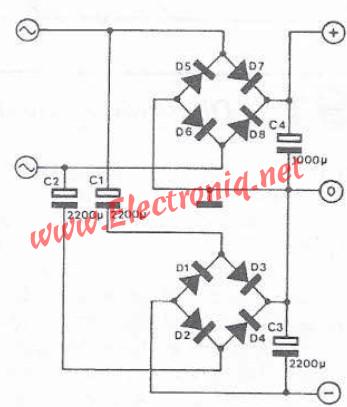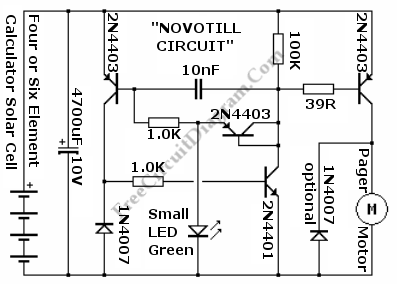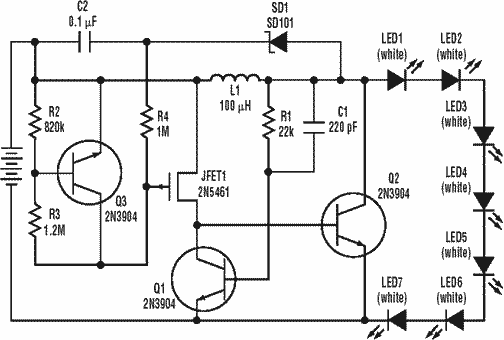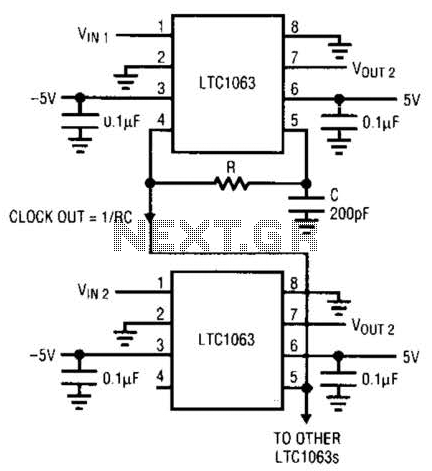
Low power temperature controller
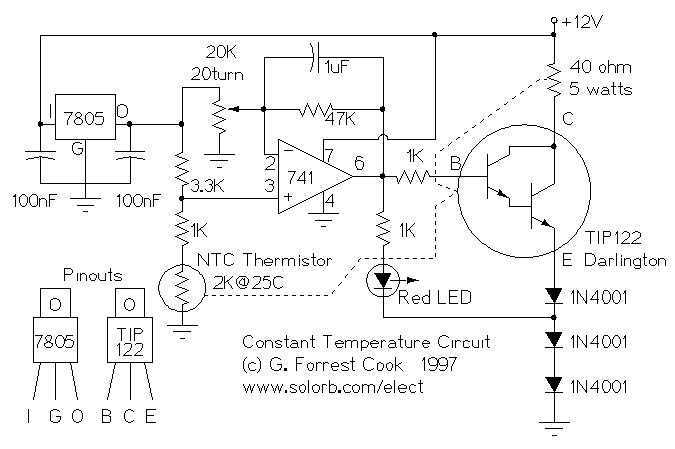
This circuit was built to stabilize a radio frequency VFO (Variable Frequency Oscillator) for ham radio applications. The circuit has also been used to lower the drift of a Ramsey FM10a micropower FM transmitter. More: The 7805 voltage regulator provides a reference voltage that is fed into a resistive bridge formed on one side by the 20K trimmer and the other side by the 3.3K resistor and the 1K/thermistor combination. The thermistor is an NTC (Negative Temperature Coefficient).
The circuit design focuses on enhancing the stability of the VFO, which is crucial for maintaining a consistent frequency output in radio applications. The use of the 7805 voltage regulator ensures a stable 5V output, which serves as the reference voltage. This stability is essential for minimizing frequency drift, particularly in varying temperature conditions.
The resistive bridge is a critical component in this circuit. It consists of a 20K trimmer potentiometer that allows for fine-tuning of the circuit's response, ensuring that the VFO operates within the desired frequency range. The 3.3K resistor, in conjunction with a 1K resistor and an NTC thermistor, forms a temperature-sensitive part of the circuit. The NTC thermistor’s resistance decreases with an increase in temperature, which provides a feedback mechanism that compensates for temperature-induced frequency variations.
By adjusting the trimmer potentiometer, the user can calibrate the circuit to achieve optimal performance, thereby reducing the drift of the VFO. The combination of these components allows the circuit to maintain a more stable frequency output over time, making it particularly well-suited for ham radio operations where frequency precision is paramount.
Overall, this circuit exemplifies an effective approach to stabilizing a VFO in radio frequency applications, leveraging a combination of voltage regulation and temperature compensation to achieve reliable performance.This circuit was built to stabilize a radio frequency VFO (Variable Frequency Oscillator) for ham radio applications. The circuit has also been used to lower the drift of a Ramsey FM10a micropower FM transmitter. The 7805 voltage regulator provides a reference voltage that is fed into a resistive bridge formed on one side by the 20K trimmer and the other side by the 3.3K resistor and the 1K/thermistor combination. The termistor is an NTC (Negative Temperature Coef 🔗 External reference
The circuit design focuses on enhancing the stability of the VFO, which is crucial for maintaining a consistent frequency output in radio applications. The use of the 7805 voltage regulator ensures a stable 5V output, which serves as the reference voltage. This stability is essential for minimizing frequency drift, particularly in varying temperature conditions.
The resistive bridge is a critical component in this circuit. It consists of a 20K trimmer potentiometer that allows for fine-tuning of the circuit's response, ensuring that the VFO operates within the desired frequency range. The 3.3K resistor, in conjunction with a 1K resistor and an NTC thermistor, forms a temperature-sensitive part of the circuit. The NTC thermistor’s resistance decreases with an increase in temperature, which provides a feedback mechanism that compensates for temperature-induced frequency variations.
By adjusting the trimmer potentiometer, the user can calibrate the circuit to achieve optimal performance, thereby reducing the drift of the VFO. The combination of these components allows the circuit to maintain a more stable frequency output over time, making it particularly well-suited for ham radio operations where frequency precision is paramount.
Overall, this circuit exemplifies an effective approach to stabilizing a VFO in radio frequency applications, leveraging a combination of voltage regulation and temperature compensation to achieve reliable performance.This circuit was built to stabilize a radio frequency VFO (Variable Frequency Oscillator) for ham radio applications. The circuit has also been used to lower the drift of a Ramsey FM10a micropower FM transmitter. The 7805 voltage regulator provides a reference voltage that is fed into a resistive bridge formed on one side by the 20K trimmer and the other side by the 3.3K resistor and the 1K/thermistor combination. The termistor is an NTC (Negative Temperature Coef 🔗 External reference


